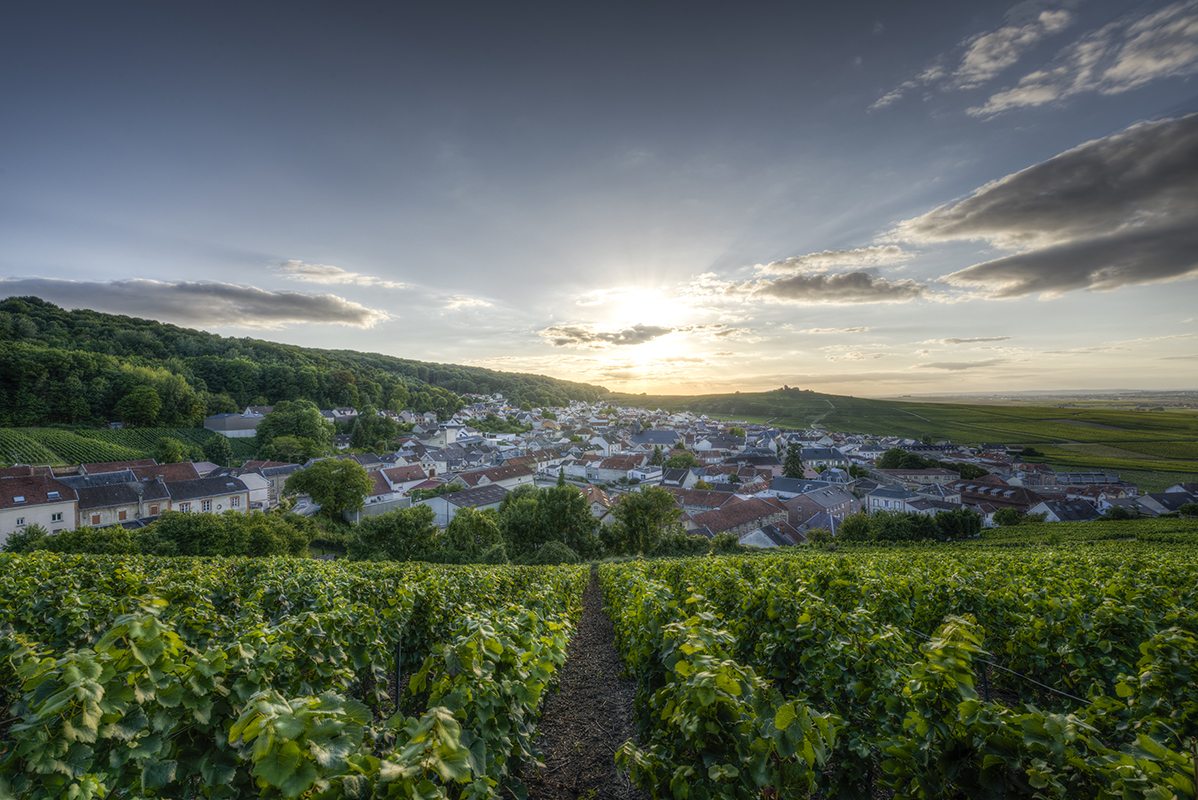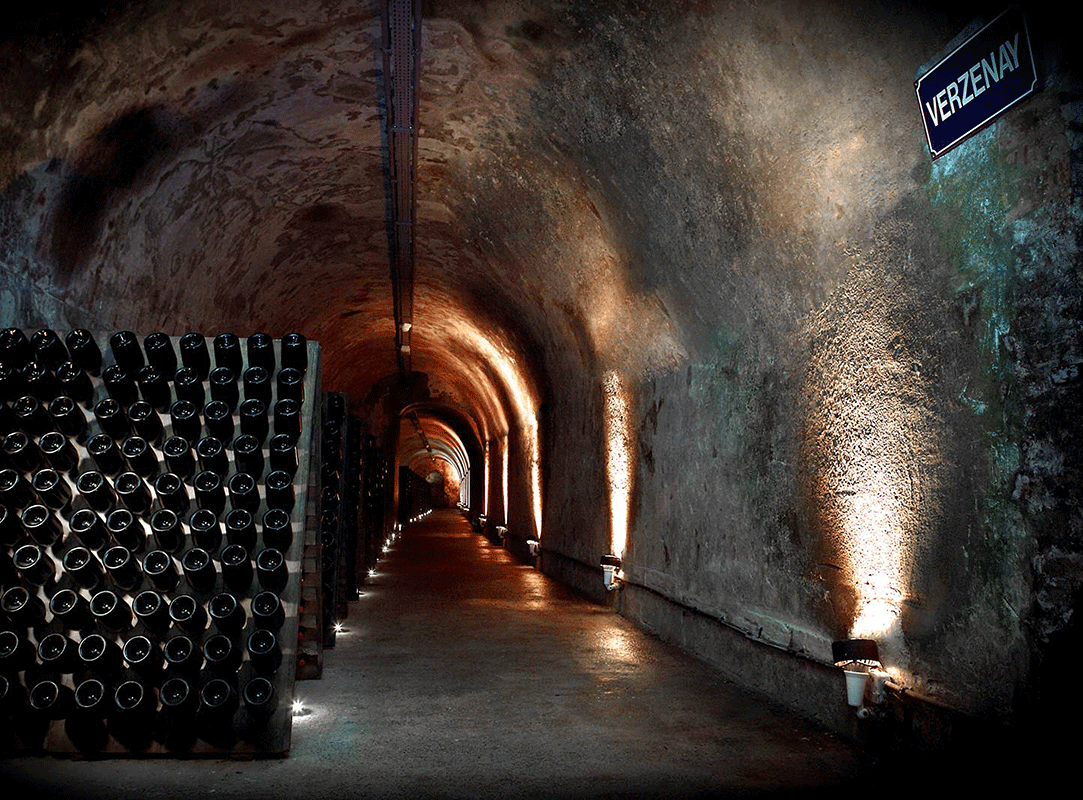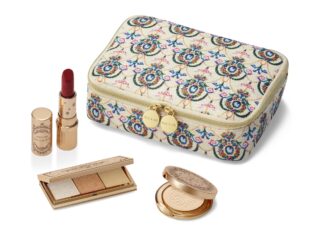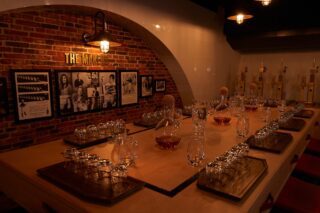This website uses cookies so that we can provide you with the best user experience possible. Cookie information is stored in your browser and performs functions such as recognising you when you return to our website and helping our team to understand which sections of the website you find most interesting and useful.
Belle surprise: how Champagne has become this year’s most surprising emerging destination
By Michelle Johnson | 14 February 2020 | Culture, Food & Drink, Travel
Visit La Champagne is revolutionising wine tourism, says the Comité Champagne’s Thibaut Le Mailloux

Located just an hour from Paris, the once-royal region of Champagne is synonymous with a sparkling wine so internationally important, no celebration would be complete without a glass. Legend says it was Benedictine monk Dom Perignon whom, in the late 1600s, invented the method of secondary fermentation in the bottle, and the world’s oldest champagne house, Ruinart, has been creating fine champagne using his method since 1729. Today, more than 320 houses produce 90% of Champagne’s global exports – the UK alone enjoyed more than 26.8 million bottles in 2018 – and yet, unlike other prominent French wine regions, such as Bordeaux or Alsace, one would hardly call Champagne a tourist destination. Until now.
In 2015, Champagne’s hillsides, houses and cellars were listed as UNESCO World Heritage Sites for their outstanding universal value, inspiring a new wave of opportunity. “Champagne wine is known throughout the world as a symbol of prestige and glamour but its image has rather obscured the territory from which it originates,” says the spokesperson of experiential tourism initiative Visit La Champagne. “It is a region of history, art and culture, of unspoilt nature and exceptional heritage; kings of France were crowned and battles were fought and won, and where the art of fine living is a way of life.”
Visit La Champagne was devised by the Regional Tourism Agency of the Grand-Est Region and the Comité Champagne to bring together more than 80 partners and ambassadors comprising champagne houses, hotels, restaurants and cultural sites throughout the 34,000-hectare region. The aim is to offer authentic experiences and unprecedented access – guests can picnic in the vineyards and explore Roman cellars, cycle through villages or dine at haute restaurants.
“We have developed bespoke events and experiences across gastronomy, heritage, and oenology,” says Visit La Champagne. This new endeavour highlights the work of the Comité Champagne, which represents every champagne producer from independent vignerons to famous houses, its role to promote the vines and wines of the region, including economic, technical and environmental development. Here, Thibaut Le Mailloux, Comité’ Champagne’s director of communications, explains the evolution of Champagne, and what tourism could mean for this most famous of wines. »
Why do you feel Champagne has been slow to emerge as a destination?
In wine regions all over the world it has been natural to invite tourism but Champagne had never done this. Achieving UNESCO status in 2015 opened Champagne up to the world and it became obvious that we had to change the perception from simply a wine region, to a wine tourism destination. We looked to many regions around the world for inspiration, including our neighbours, such as Alsace. Of course, Alsace has a very different experience because it was not destroyed during the First World War. Champagne was a field of ruins after it and during the 1920s, while Alsace was very beautiful. But Champagne has developed so much in recent years. The UNESCO status has triggered a lot of initiatives and entrepreneurship, but we’ve been focused more on creating a unique, experiential dimension for visitors.
How does the Visit La Champagne collaboration benefit the region?
Champagne is the authentic sparkling wine – it’s the original – and so we needed the image of the region to be consistent with the prestige of the wine. So, we all wanted the wine tourism experience in Champagne to be a cut above just visiting a few wineries. With Visit La Champagne, we don’t just have people offering wine tours or vineyard visits. Visitors can experience the authentic Champagne, enjoy new restaurants and hotels, unique experiences, and find a region that is finally becoming very international again. Guests can explore our cellars, which have graffiti from across history – Romans, revolutions, refugees from the World Wars – but also contemporary art and emerging families. It’s like a window into the past as well as the future. We want to offer the opportunity to understand that yes, we have famous names that have been on the market for 250 years, but Champagne is also incredibly diverse. It’s an interesting moment. >>

Champagne is a world leader in sustainable development. Can you tell us about this?
It’s our big focus. If you look at Champagne’s recent history, the first half of the 20th century was about reclaiming the land and replanting after the World Wars and Great Depression. We’re only now reaching the climax of our potential for production. But towards the end of the 1990s, our research and development showed us the restraints of our terroir; we realised we would not be able to grow in volume. Champagne has a complicated production: you must hold a diploma to prune the vines, you must harvest by hand, there’s a long aging process in the cellars. At the same time, we saw that the climate was changing. Our grapes were ripening faster, losing acidity, average temperature had risen. So we began thinking about how to lower our environmental impact and adapt to climate change – this began as early as 2001, when we first assessed our global environmental footprint. In 2003 we were the first industry to do a carbon footprint assessment of our wine region. In those two years we launched 50 R&D programmes designed to help drop our impact and improve our biodiversity.
One of the Comité’s major projects is to produce a new variety of grape. What impact will this have on the region?
Our goal is to continue to produce champagne and to keep its distinctive style and taste but with climate change, our grapes are losing acidity and gaining sugar. This project is about creating grape varieties that can adapt to the region’s new climate, which will replace or complement chardonnay, pinot noir and meunier grapes in the next 25 years. The new grapes need to keep the flavours of chardonnay, pinot noir, and meunier, but they will need to resist heat, ripen more slowly and keep their level of acidity. At the same, we want them to be naturally resistant to fungus so we can continue dropping the use of pesticides. When these are ready, they will be authorised and made available for the whole region.
How do you ensure independent vineyards compete with global brands?
Every winemaker or grower of grapes in Champagne must be part of Comité Champagne. So, even if families are competing in the market they must all work together and find a consensus in how we ensure the region thrives. This means that any development is made available for every champagne producer. For example, the technical support to convert to green practises is available to every single grape grower in the region. We hope our sustainability practises inspire and help other regions and industries. That’s why we publish the results and methodologies of what we find, too – so if another wine region wants to visit Champagne and understand how we are adapting to climate change, we will guide you through it, because the more regions do this, the better it is for us all.
What are some of the common misconceptions about champagne?
Our society has developed strict codes and rules about how to enjoy champagne – such as the best glasses to food pairings. My advice would be to ignore the rules and enjoy the experience of your champagne. My wife and I have two crystal cups from the 1920s and it’s become our tradition to drink from these on Valentine’s Day, while glassmaker Riedel is campaigning against traditional champagne flutes. Champagne is also a more versatile wine than many think. It goes as well with caviar and oysters as it does with a Chinese meal or fish and chips. Recently, I’ve been pairing champagne with camembert, and it’s heaven. The truth is, the experience and joy you get from a pairing is infinitely more important than rules. That’s what keeps you in love with champagne: there’s an infinity of expressions, and you can always find little surprises.







